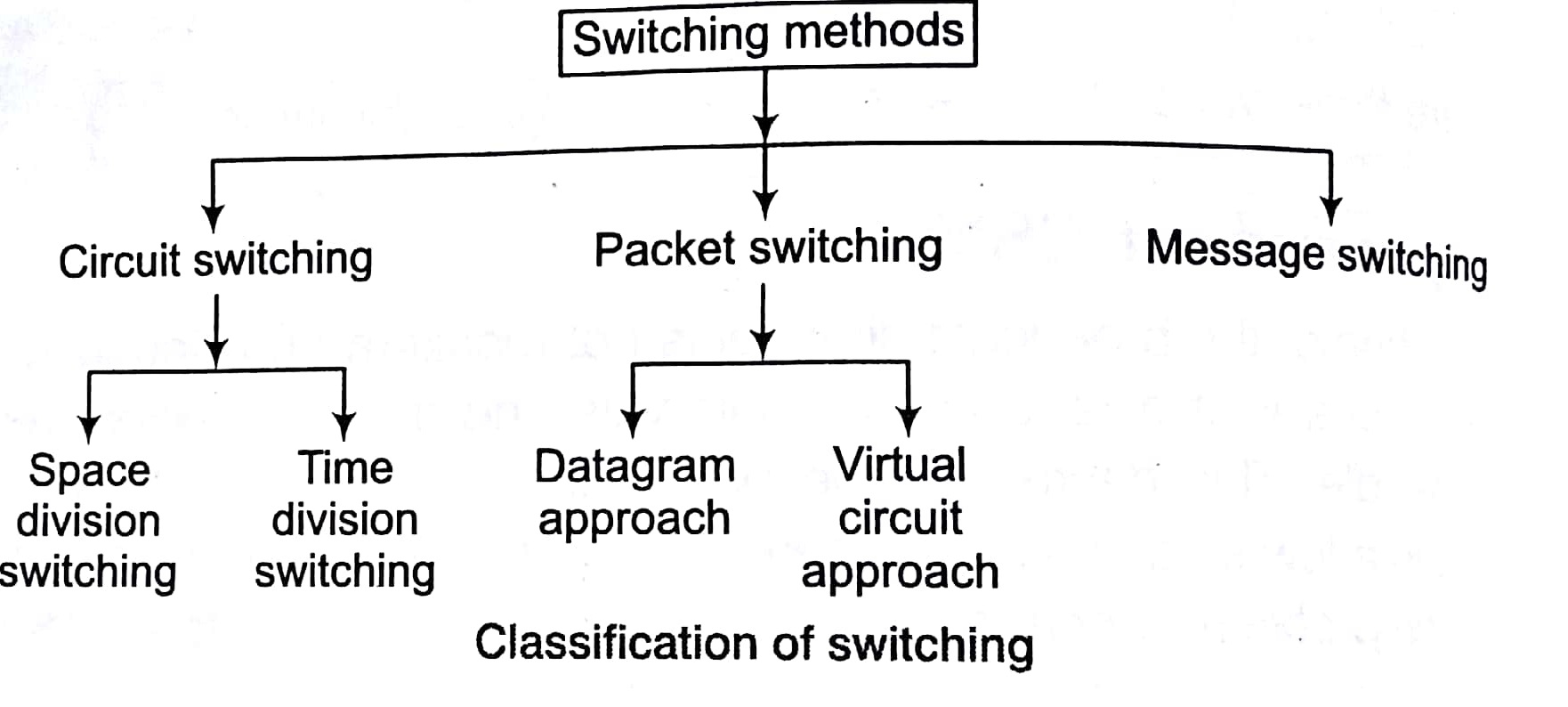Switching in Computer Network Tutorial Study Notes with Examples
Switching
Whenever, we have multiple devices we have a problem of how to connect them to make one-to-one communication possible. Two solutions could be like as given below
- Install a point-to-point connection between each pair of devices (Impractical and wasteful approach when applied to very large network).
- For large network, we can go for switching. A switched network consist of a series of interlinked nodes, called switches.
In a switched network, some of these nodes are connected to communicating devices. Others are used only for routing.

Circuit Switching
It creates a direct physical connection between two devices such as phones or computers. In the given diagram, instead of point-to-point connections between the 3 computers on the left (A, B, C) to the 4 computers on the right (D,E, F, G) requiring 12 links. We can use 4 switches to reduce the number and the total length of links. So in figure, computer, A is connected through_ switches II and III to computer D. f circuit switch is a device with n inputs and m outputs that creates a temporary connection between an input link and output link.
Space division switching
Separates the path in the circuit from each other spatially.
Time division switching
Uses time division multiplexing to achieve switching.

Time division switching notwork
Circuit switching was designed for voice communication. In a telephone conversation. e.g., Once a circuit is established, it remains connected for the duration of the session.
Disadvantages of Circuit Switching
- Less well suited to data and other non-voice transmissions. Non-voice transmissions tend to be bursty, meaning that data come in spurts with idle gaps between them. When circuit switched links are used for data transmission, therefore the line is often idle and its facilities wasted.
- A circuit switched link creates the equivalent of a single cable between two devices and thereby assumes a single data rate for both devices. This assumption limits the flexibility and usefulness of a circuit switched
- Once a circuit. has been established, that circuit is the path taken by all parts of the transmission, whether or not it remains the must efficient or available.
- Circuit switching sees all transmissions as equal. Any request is granted to whatever link is available. But often with data transmission, we want to be able to priorities.
Packet Switching
T0 overcome the disadvantages of circuit switch. Packet switching concept come into the picture.
In a packet switched network, data are transmitted in discrete unites of potentially variable length blocks called packets. Each packet contains not only data but also a header with control information (such as priority Codes and source and destination address). The packets are sent over the routed according to the information in its header.
. There are two popular approaches to packet switching.
(i) Datagram (ii) Virtual circuit
Datagram Approach
Each packet is treated independently from all others. Even when One packet represents just a piece of a multi-packet transmission, the network (and network layer functions) treats it as though it existed alone.
Packets in datagram approach technology are referred to as datagram&

A datagram network with four switches
Virtual Circuit Approach
The relationship between all packets belonging to a message or session is preserved. A single route is chosen between sender and receiver at the beginning of the session. When the data are sent, all packets of the transmission travel one after another along that route.
We can implement it into two formats
- Switched Virtual Circuit (SVC) • Permanent Virtual Circuit (PVC)
SVC (Switched Virtual Circuit)
This SVC format is comparable conceptually to dial-up lines in circuit switching. In this method, a virtual circuit is created whenever, it is needed

PVC (Permanent Virtual Circuit)
The PVC format is comparable to leased lines in circuit switching. In this method, the same virtual circuit is provided between two users on a continuous basis. The circuit is dedicated to the specific users. No one else can use it and because it is always in place, it can be used without connection establishment and connection termination.
Key Points
- Whereas, two SVC users may get a different route every time, they request a
- Two PVC users always get the same route.
Message Switching
It is also known as store and forward. In this mechanism, a node receives a message, stores it, until the appropriate route is free, then service it along. Store and forward is considered a switching technique because there is no direct link between the sender and receiver of a transmission. A message is delivered to the node along one path, then rerouted along to its destination.
In message switching, the massages are stored and relayed form secondary storage (disk), while in packet switching the packets and forwarded from primary storage (RAM).

Sorting in Design and Analysis of Algorithm Study Notes with Example
Learn Sorting in Handbook Series: Click here
Follow Us on Social Platforms to get Updated : twiter, facebook, Google Plus
